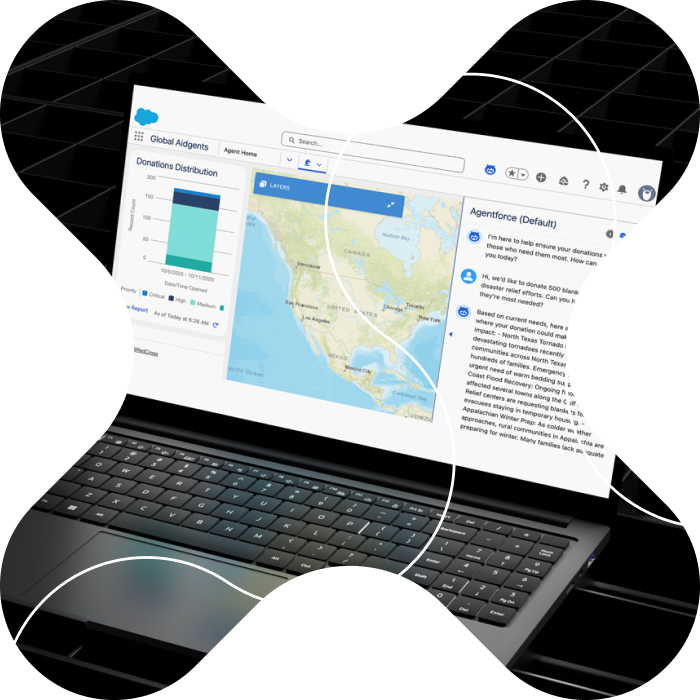TL; DR: Low code development is revolutionizing software creation by simplifying coding tasks for developers. With the low code market projected to hit $30 billion by 2024, this article delves into what defines low code, its distinction from no code platforms, its many benefits, and the best available platforms.
The rise of low code application development has sparked a paradigm shift in the world of programming languages, greatly simplifying day-to-day coding for developers.
Data from a recent Gartner report states that by 2024, the low code development technology market is expected to cross the impressive $30 billion mark in revenue. This booming popularity underscores how instrumental low code app development has become in driving digital transformation.
In this article, we'll grasp the essence of low code development, distinguish it from no code solutions, delve into its many benefits, and spotlight the leading platforms in the market.
What is Low Code Development?
Low code is a transformative approach to software development, enabling devs to craft applications with less code compared to traditional methodologies. Low code app platforms, often abbreviated as LCAPs, offer a Graphical User Interface where developers can drag and drop components that represent common software development tasks, such as if/then rules or workflow processes.
Why is it Groundbreaking?
This visual-based methodology is versatile; it caters to individuals with basic coding knowledge as well as seasoned devs aiming to speed up the development process. Whether it’s for simple or complex apps that would typically require hands-on coding, low code provides a quicker route to high-quality software development.
What's the Difference Between Low code and No code Platforms?
The terms low code and no code often stir up the same imagery: an agile, straightforward software development process. However, while they share similarities, understanding their distinct functionalities is crucial.
At their core, no code platforms are designed for individuals with zero programming experience. Imagine building a website, crafting an electronic game, or designing an app, all without writing a single line of code. With no code platforms, visual guides take center stage, enabling virtually anyone to become a creator without diving into the nitty-gritty of coding.
On the other hand, low code platforms cater to both the technically versed and beginners. While they streamline the process with pre-built solutions, there's still some coding involved, even if it’s minimal.
For devs, low code platforms are akin to having a toolkit filled with ready-to-use tools, allowing them to assemble applications rapidly.
Advantages of Low code Development
As technology continues to evolve, low code development has steadily gained prominence due to its versatility and speed. Here are seven of the most significant advantages of adopting a low code development approach:
Speedier Development: Low code platforms accelerate the development process. By minimizing the amount of manual coding, developers can quickly roll out applications, making it ideal for businesses looking to launch or test new ideas promptly.
Flexibility and Adaptability: Given the modular nature of most low code platforms, swapping out older components and introducing new ones becomes simpler. Unlike traditional coding, where altering the core code can be time-consuming, low code platforms promote adaptability.
Cost-Efficiency: Developing software from scratch can be expensive. With low code platforms, businesses can significantly reduce development costs. Many platforms also offer affordable pricing plans suited for various project types.
Enhanced Visual Resources: Low code platforms frequently come with a profusion of visual models and assets, facilitating the creation of visually appealing, intuitive, and user-friendly apps.
Scalability and Security: Most low code platforms incorporate their own databases, simplifying data management and security. As the business grows or changes, the system can be quickly and efficiently scaled to meet new demands.
Improved Productivity: Low code platforms typically feature various tools for task management, workflows, and other functionalities that optimize processes. This leads to enhanced productivity, making it perfect for those keen on swiftly implementing innovations or improvements.
The Four Best Low Code Platforms
Now, here's a detailed overview of the top four low code platforms (Gartner), discussing their primary features and usability:
1. Microsoft Power Platform

Microsoft offers a platform to build custom business applications swiftly and without the need for extensive coding skills. One standout feature is its incorporation of pre-built artificial intelligence components, allowing developers to leverage AI without diving deep into the complexities. The platform also provides extensibility with more than 1.100 connectors, ensuring seamless integration of diverse data sources and systems. Power Platform is integrated with Microsoft 365, letting all users of this popular service start their low coding journey.
With a user-friendly interface and integration with other Microsoft services, Power Apps is tailored for both tech-savvy professionals and those with little to no coding experience.
2. Salesforce Einstein 1 Platform Low Code

This solution stands out as a component-based framework designed to simplify app development and automation on the Salesforce CRM platform. It offers an array of app development tools that aid in creating mobile apps with cutting-edge Salesforce Lightning page layouts.
Moreover, developers can design custom reusable components, enhancing the app development experience for other users.
3. OutSystems

With its full-stack development capabilities, OutSystems supports the creation of a wide collection of apps, such as customer portals, internal apps, and even core systems.
It also includes built-in security, scalability, and integration with other systems and services.
4. Mendix

This one is another strong contender in the low code platform race. Apart from its drag-and-drop interface, Mendix offers multi-cloud deployment, AI-assisted development, and a dedicated app store for pre-built components.
The platform's holistic approach encourages collaboration between devs and stakeholders, ensuring that applications meet both technical and business requirements.
In conclusion, while all four platforms offer robust low code development capabilities, the right choice will largely depend on an organization's unique demands. If you want to know how we help companies leverage enterprise solutions for their specific needs, check out our CXM and CRM services page.
Why Low Code Can be the Future of Application Development
The transformative potential of low code platforms lies in their ability to democratize the development process. They open the door for individuals without a deep programming background to actively take part in creating solutions tailored to specific business needs.
Despite the advances and conveniences of low code, it's essential to debunk a common myth: that developers will become obsolete. As with any technological evolution, roles adapt and change. Devs won't vanish but can then pivot towards more strategic, supervisory roles. They'll be instrumental in guiding the optimal use of these platforms and ensuring that technical standards and best practices are met.
If you're looking to enhance your platform’s capabilities with low code apps tailored to your specific needs or simply need to be pointed in the right direction to be at the forefront of the technology industry, we can help you out.





.png)